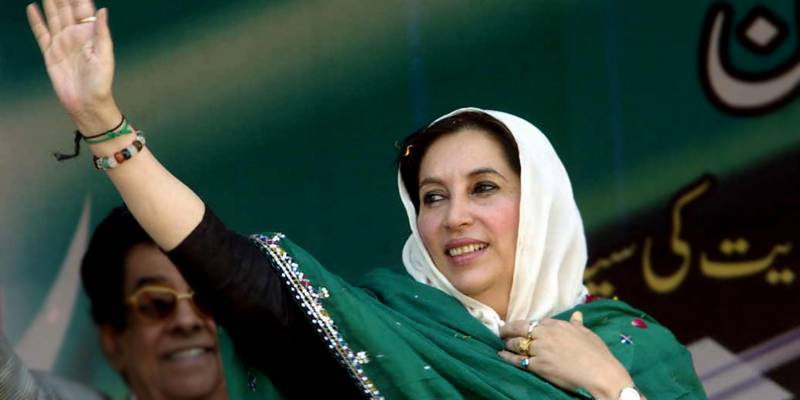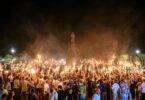Sharjeel Inam Memon
It has been 16 years since Shaheed Ms. Benazir Bhutto left us, but the pain of her tragic death remains fresh. Reflecting on this great tragedy, the soul still trembles today, as terrorists attacked and brutally martyred her in Liaquat Bagh, Rawalpindi, on December 27, 2007. This tragic event not only shocked the people of Pakistan but also democratic forces worldwide, leaving a lasting legacy of grief, sorrow, and sadness transmitted from generation to generation.
Even today, people often ask the question: when the martyr Ms. Benazir Bhutto knew in advance that her life was in danger, why did she return to her homeland after ending her 8-year exile? The answer to this question is that Shaheed Ms. Benazir Bhutto was not only aware of the danger but also believed that some national and international forces had conspired and planned to kill her.
Not only had foreign governments informed him about this plan, but she herself had also briefed some world leaders and media representatives about it. She had formally informed the then President General Pervez Musharraf about the project. Despite this, she returned home and personally answered this question.
In an interview, she expressed, “We are individuals who engage in discourse. We possess ideology and emotions. We know how to live and die. History is woven with the sacrifice of martyrs. The very fabric of history is crafted by the threads of revolution.”
On October 18, 2007, as Shaheed Bibi was leaving Dubai, numerous individuals cautioned her against returning to her homeland due to the imminent threat to her life. However, she persistently reiterated, “I will not abandon my people. We live and die alongside them.” When she landed at Karachi Airport on the same day, there was a cheering sea of people welcoming her. It was a historic day when the people of Pakistan decided they wanted a peaceful, developed, and democratic Pakistan under the leadership of Mrs. Benazir Bhutto.
In October 2007, a revolution unfolded in Pakistan. Anti-democratic and anti-people forces utilized the power of gunpowder to suppress people’s power. By targeting Ms. Benazir Bhutto through terrorists, they demonstrated their intent to physically sever Shaheed Bibi from the people at any cost and ruthlessly implement their plan. About 200 democrats were martyred, and hundreds were injured in this terrorist incident. Ms. Benazir Bhutto was spared in this incident, but the pages of her unpublished book, “Reconciliation,” were stained with the blood of the martyrs.
In this book, a solution was provided to eradicate terrorism worldwide, including Pakistan, and to establish a peaceful global society. The aim is to foster democracy globally and eliminate the gap between the rich and the poor. This will only be possible when the path of reconciliation is embraced everywhere, replacing conflict.
This implies that Shaheed Ms. Benazir Bhutto arrived in Pakistan on October 18, 2007, with a significant mission as a world leader. The fulfillment of this mission was only possible if she lived among the people of Pakistan and initiated the struggle.
The initial step of her mission was to reinstate democracy in Pakistan. Following that, terrorism was to be eradicated by uniting the democratic and peace-loving forces globally, and poverty should be eliminated by fostering a conducive environment for democratic and political processes worldwide. Completing this mission was not feasible by remaining distant from the people. Following the tragedy that occurred in Karachi on October 18, 2007, party leaders and other well-wishers advised the late Ms. Benazir Bhutto to leave Pakistan again and conduct her campaign from abroad. After the tragedy on October 19, 2007, when she conducted a press conference at Bilawal House in Karachi, a journalist asked her whether, despite the events of October 18, she would continue running a public relations campaign for the elections.
To this, she replied without any pause, “Those people also want me not to run an election campaign and go back. They wish for real democracy not to be restored in Pakistan. However, if democracy is not restored, the dangers for Pakistan will increase. I will stay with my people.” Then the world witnessed Shaheed Bibi initiating a public relations campaign once again. In every meeting, she used to declare, “I have risked my life for democracy in Pakistan.”
After the October tragedy, he added more to his book “Reconciliation” and wrote in one place, “I suffered the punishment of my father’s arrest, imprisonment, and murder, and I knew that such wounds of the soul never heal. I was ready to do anything to spare my children from the pain I endured at my father’s death. However, this was the only thing I could not do.”
From these words of Mrs. Benazir Bhutto, it is not difficult to infer that she loved her children dearly and did not want to subject them to the shock of her death. Yet, she consciously accepted her death. During the election campaign, she once visited the shrine of Shaheed Zulfiqar Ali Bhutto in Garhi Khuda Bakhsh and sat there alone for several hours, closing all the doors of the shrine.
On that very day, people realized that Shaheed Bibi was certain about her death. Despite this, she resumed the election campaign. Even during this period, people continued advising her not to attend meetings. But she used to respond that if I do that, the dangers for Pakistan will increase and hen, that happened. On December 27, 2007, she was martyred in public.
Today, if there is democracy in Pakistan, it is the result of the sacrifice of Shaheed Bibi. Shaheed Bibi is a metaphor of bravery and courage in history. Shaheed Bibi is a metaphor of love for her country and her people. The enduring bond she established with her land and people through her sacrifice will remain forever. We all owe it to the blood of Shaheed Bibi to continue her mission of restoring true democracy in Pakistan.







